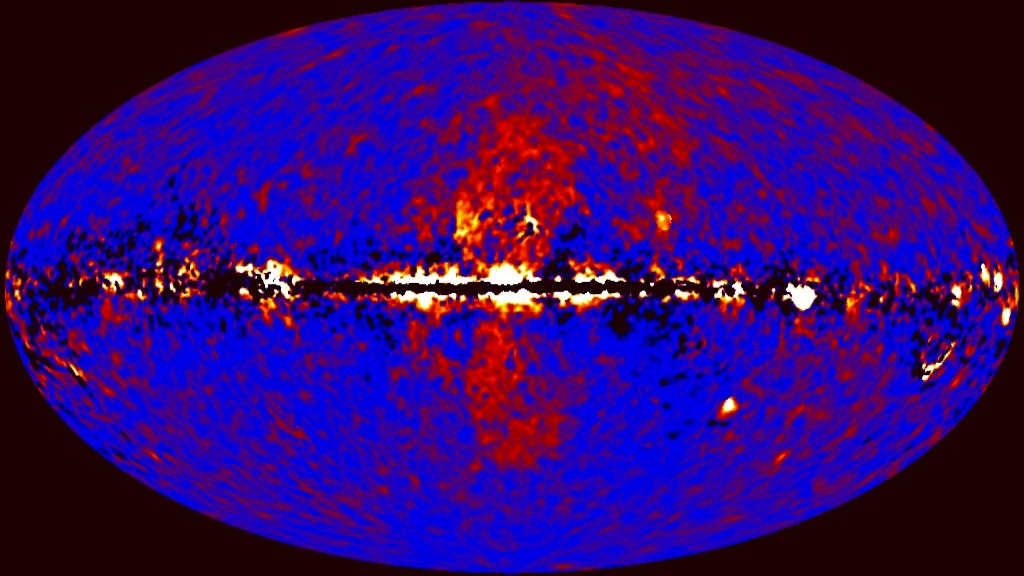shaileshs wrote: ↑Wed May 03, 2023 4:20 am
Multiple things (questions) top of my head - 1) Why jet stream is visible only on 1 side ? 2) Why jet stream is only red in color ? 3) What's the while "halo" filled all around the center ? 4) With such distorted (mixed eliptical/circular) shape, how do we even know/how can we define edge of galaxy and size of galaxy ? 5) We can see stars with spikes obviously in our own milky way and we can clearly see some various size/shaped galaxies in background but apart from those obvious ones, there's 1000s of light sources seen - bright/dim, yellow/white/blue.. how do we know (or how we can make out) how many and which ones are stars v/s galaxies ? Ufffff... I need to read a bit more on these topics.. Thanks in advance for all comments/answers.
1) Why is the jet stream visible only on 1 side? I don't know, but please note that the famous giant elliptical galaxy M87 also has a jet that is visible only on one side. But a combined X-ray and radar image of M87 shows activity on both sides, although somewhat asymmetrically distributed:
2) Why is jet stream only red in color? The red color is a false or mapped color to bring out the jet and make it easier to see. You can tell that this is false color because the red hue is so saturated, so "unvarying in intensity" and so extremely sharply outlined. To be so "visually red", the only optically visible wavelengths that the jet could emit would be between 650 and 750 nm. But the jet does not behave like that. In reality, the jet is mostly visible in X-rays:
3) What's the while "halo" filled all around the center? Not exactly sure what you mean by that, but the visible whitish halo surrounding Cen A is made up of old stars that were flung out of Cen A during its ongoing merger with the small spiral galaxy that is seen as a broad dark dust band across the face of Cen A. Take a look at this black and white image of elliptical galaxy NGC 474 and its amazing shells of old stars:
4) With such distorted (mixed elliptical/circular) shape, how do we even know/how can we define edge of galaxy and size of galaxy? That's a tricky question, but there is such a thing as the "half-light radius":
COSMOS - The SAO Encyclopedia of Astronomy wrote:
Half-light Radius
The sizes of galaxies are difficult to measure since they don’t possess clearly defined boundaries. Most galaxies simply get fainter and fainter in their outer regions, and the apparent size of the galaxy depends almost entirely on the sensitivity of the telescope used and the length of time for which the object is observed.
To overcome this ambiguity, astronomers define the ‘half-light’, or ‘effective’ radius (re) as the radius within which half of the galaxy’s luminosity is contained.
But when astronomers measured the full size of the halo of Andromeda, they found that it reached halfway to the Milky Way.
Halo of Andromeda (in purple). The visible galaxy is the small white object in the center.
Credits: NASA, ESA, J. DePasquale and E. Wheatley (STScI), and Z. Levay
5) We can see stars with spikes obviously in our own Milky Way and we can clearly see some various size/shaped galaxies in background but apart from those obvious ones, there's 1000s of light sources seen - bright/dim, yellow/white/blue.. how do we know (or how we can make out) how many and which ones are stars v/s galaxies ?
All the light points with spikes are stars in our own galaxy.
Sci News wrote:
Also known as NGC 5128,
the galaxy is too far away to allow astronomers to see individual stars, but star clusters can be identified as such and used as fossil evidence of the galaxy’s tumultuous evolution.
I don't agree that it is impossible for astronomers to see individual stars in Cen A. Individual young blue stars are clearly seen in the dust lane of Cen A in this Hubble photo:
And the old red and yellow stars of the elliptical component of Cen A should be visible to James Webb. But we are not going to see them as individual stars in a picture like the APOD. We might - possibly - see some globular clusters, although I wasn't able to spot any obvious globular clusters in Cen A when I was scanning the APOD.
Milky Way globular cluster Omega Centauri (bottom)
and galaxy Cen A (top). Credit: Marco Lorenzi.
There are many background stars in the field of Cen A, so some of the faint points of light that seem to lack diffraction spikes may still be Milky Way stars. But all the objects that are fuzzy and extended are likely to be background galaxies.
Ann
 Centaurus A: A Peculiar Island of Stars
Centaurus A: A Peculiar Island of Stars










